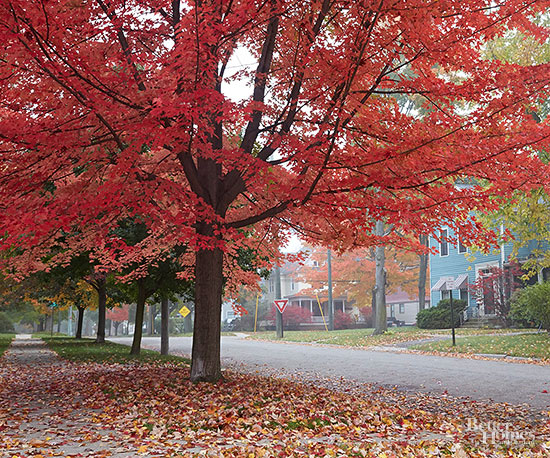






It sounds like one of several options: sweet gum (Liquidambar styraciflua), chestnut (Castanea), or buckeye/horsechestnut (Aesculus). All are common landscape trees and produce spiny pods around their seeds. The spines help protect the seeds from being eaten. Sweet gum has glossy green leaves with five lobes, similar to a sugar maple. Fall color is variable but can be quite dramatic, with a combination of yellows, reds, and purples. It produces spiny brown balls of fruit that drop off the tree over an extended period. The spiny fruit may be used in crafts projects or as mulch to deter rabbits. (If you've stepped on one barefoot, you know how painful it can be!)
continue reading below
American chestnut (Castanea dentata) used to be one of the most widespread native trees in North America, but fungus blight wiped out most of them. Chinese chestnut (C. mollissima) or hybrids between the two species are more likely to be found nowadays. Leaves are simple and toothed along the margins. Fruits consist of 1 to 4 nuts enclosed in prickly burs that split open into 2 to 4 valves. Fall color is yellow or bronze. Ohio buckeye (Aesculus glabra) is usually a small to medium-size tree (20-40 feet tall) with palmately compound leaves with 5 leaflets. Common horsechestnut (A. hippocastanum) is 50-75 feet tall and usually has 7 leaflets rather than 5. Both bear 1 or 2 nuts in a prickly or spiny capsule that splits open. Ohio buckeye turns orange-red to reddish brown in fall; horsechestnuts turn yellow or brown.
Copyright © www.100flowers.win Botanic Garden All Rights Reserved